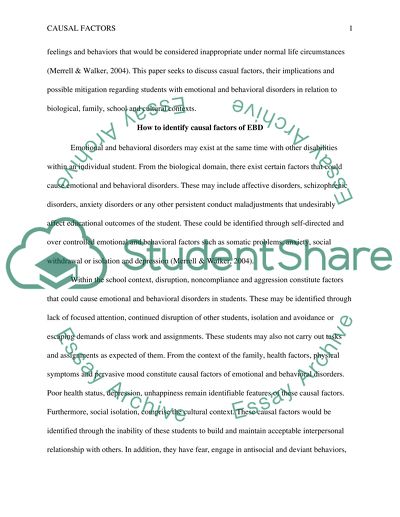Cite this document
(“Causal Factors Regarding Students with Emotional and Behavioral Essay”, n.d.)
Retrieved from https://studentshare.org/education/1466546-casual-factors
Retrieved from https://studentshare.org/education/1466546-casual-factors
(Causal Factors Regarding Students With Emotional and Behavioral Essay)
https://studentshare.org/education/1466546-casual-factors.
https://studentshare.org/education/1466546-casual-factors.
“Causal Factors Regarding Students With Emotional and Behavioral Essay”, n.d. https://studentshare.org/education/1466546-casual-factors.


